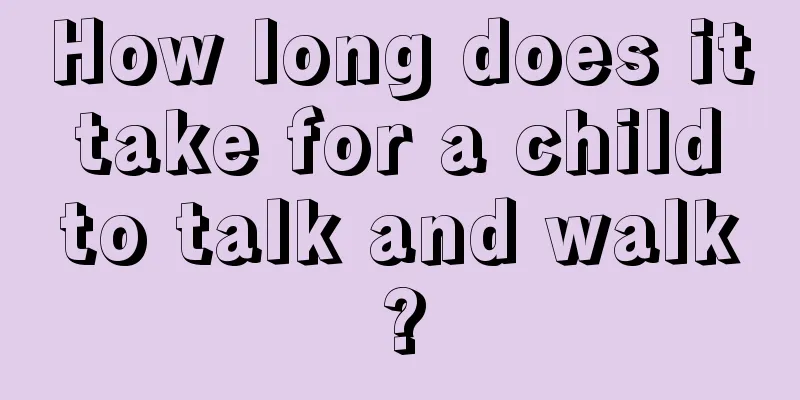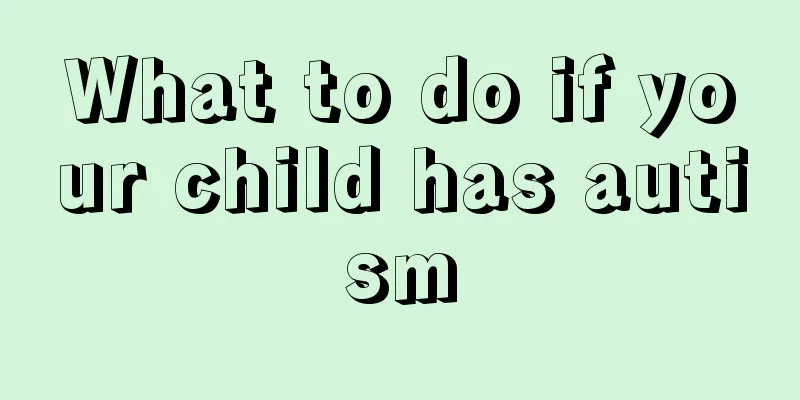How long does it take for a child to talk and walk?

|
After a child is born, parents are very concerned about when the child will be able to talk and walk. Most of the conversations among mothers are about when their babies will walk, call mom and dad, etc. How long it takes for a child to be able to talk and walk is also related to his physical and intellectual development. So, under normal circumstances, how long does it take for a child to be able to talk and walk? Let's introduce it in detail below. In children with normal development, they can actually make babbling sounds as early as two months old, can generally utter single words by eight months old, and begin speaking sentences around one year old. At 9-10 months old, the baby can take steps by holding on to something, and can walk by holding onto an adult's hand. They can walk independently at around 1 year old. However, there are large individual differences in children's language and motor development, some early and some late. Suggestions: 1. Generally, as long as the baby develops normally and can crawl and squat, he will be able to walk soon. 2. As long as the baby can babble and understand what adults say from a young age, there is generally no big problem. 3. Seek medical attention promptly if any abnormality is found. Children's walking exercises 1. Start by crawling Crawling can exercise the tension and strength of the baby's leg muscles, which is beneficial for learning to walk. Let your baby crawl on the floor or hard mat often (a surface that is too soft is not conducive to the baby's practice), and you can use toys to induce him. 2. Do sit-ups To exercise your baby's muscle strength, you can also do sit-ups with your baby. The baby lies on his back, and the mother holds his hands and does the following movements: sit up - stand - sit down - lie down, and repeat this several times. Be careful not to pull the baby's hands too hard to prevent the baby from dislocating due to improper force. 3. Stretch your legs Hold the baby's armpits with both hands, lift the baby up, and let him do kicking and jumping movements to practice the baby's leg stretching ability. 4. Grab toys, climb and crawl Standing is the prerequisite for walking. Place your baby's favorite toys on a sofa or coffee table that is about the same height as your baby, and encourage him to stand up and grab the toys. You can also place the toys on the sofa or hold them in your hands to encourage your baby to climb. 5. Practice standing with your hands free At first, the baby will be afraid and unwilling to let go of his hands and stand. Parents can hand the baby a toy that he cannot hold with one hand, such as a ball, a doll, etc., so that the baby will unconsciously let go of his hands and stand alone. You can also put the toy on the other side to entice your baby to turn his body and stand alone. 6. Walking training Let your baby move around in an environment where he can be supported, such as letting him move by holding on to the wall, sofa, coffee table, crib, railing, stroller, or light stool. Parents can also stand behind the baby, hold the baby's arm, and lead him to walk forward, and then slowly transition to holding one of the baby's arms and letting him walk by himself, and can give commands to stimulate the baby's interest. Be careful not to pull or lift your baby's forearm to make him walk, as this can easily cause dislocation. How to practice speaking: 1. First of all, the person who teaches the child to speak must be patient and start with the simplest one or two words, for example: dad, mom, aunt. If it doesn’t work once, try a few more times. 2. Listen more. Let your child listen to adults repeating a word or sentence over and over again to enhance his or her hearing sensitivity and understanding of language. For example, when the mother is talking, the father is reading nursery rhymes, the birds are singing, the telephone is ringing, the car is honking, etc., while listening to these sounds, the adult asks the child to pay attention and observe while saying these simple words: "mother", "daddy", "bird", "telephone", "car", etc., so that the child can understand and learn to say them. 3. Multiple fingers. If your child has difficulty mastering certain words or cannot speak certain sentences at the moment, you can let him use his fingers when touching things. For example, when taking a walk in the park, you can ask him, "Where are the red flowers?" "Where is the blue sky?" "Where is the big tree?" When you put clothes and socks on your child, you can ask him to point out "where are the clothes." When washing your child's face, you can ask him where the eyes, nose, ears, and mouth are. The child can point to show that he understands. When he hears adults say the name, he can also imitate the pronunciation. |
<<: How to quickly whiten your child
>>: Why does a child have a stomachache when running?
Recommend
What are the causes of stomach pain in two-year-old babies?
Some babies always complain of stomachaches, but ...
There are some tips for children who don’t like to drink water
Water is the source of life, which is enough to s...
What to do if your baby spits up after eating milk powder
Babies need to make the transition from drinking ...
What to do if a two-year-old child has yellow hair
Children should have black hair, but some parents...
Reasons why babies sweat a lot on their feet
Babies are a relatively vulnerable group. In dail...
Red spots on baby's body after infusion
After the baby is discharged from the hospital, i...
What knowledge do you have about artificial feeding of infants?
Artificial feeding is a way of feeding babies whe...
How to treat snoring in children?
In daily life, snoring is a very common phenomeno...
What causes a child to have a fever while teething?
Many parents and friends have recently said that ...
What should I do if I have a fever after getting the hepatitis A vaccine?
Vaccines are currently a common method of injecti...
What to do if children have eczema on their face
Eczema is a skin disease that is common in childr...
What to prepare for the one-year-old lottery
It is a traditional custom in China to let one-ye...
What should I do if my child has tooth worms?
Many children have tooth decay due to better livi...
How much sleep is healthy for children?
As we all know, sleep is very important for child...
How effective is the children's cold antipyretic syrup
There are many common cold medicines for children...









